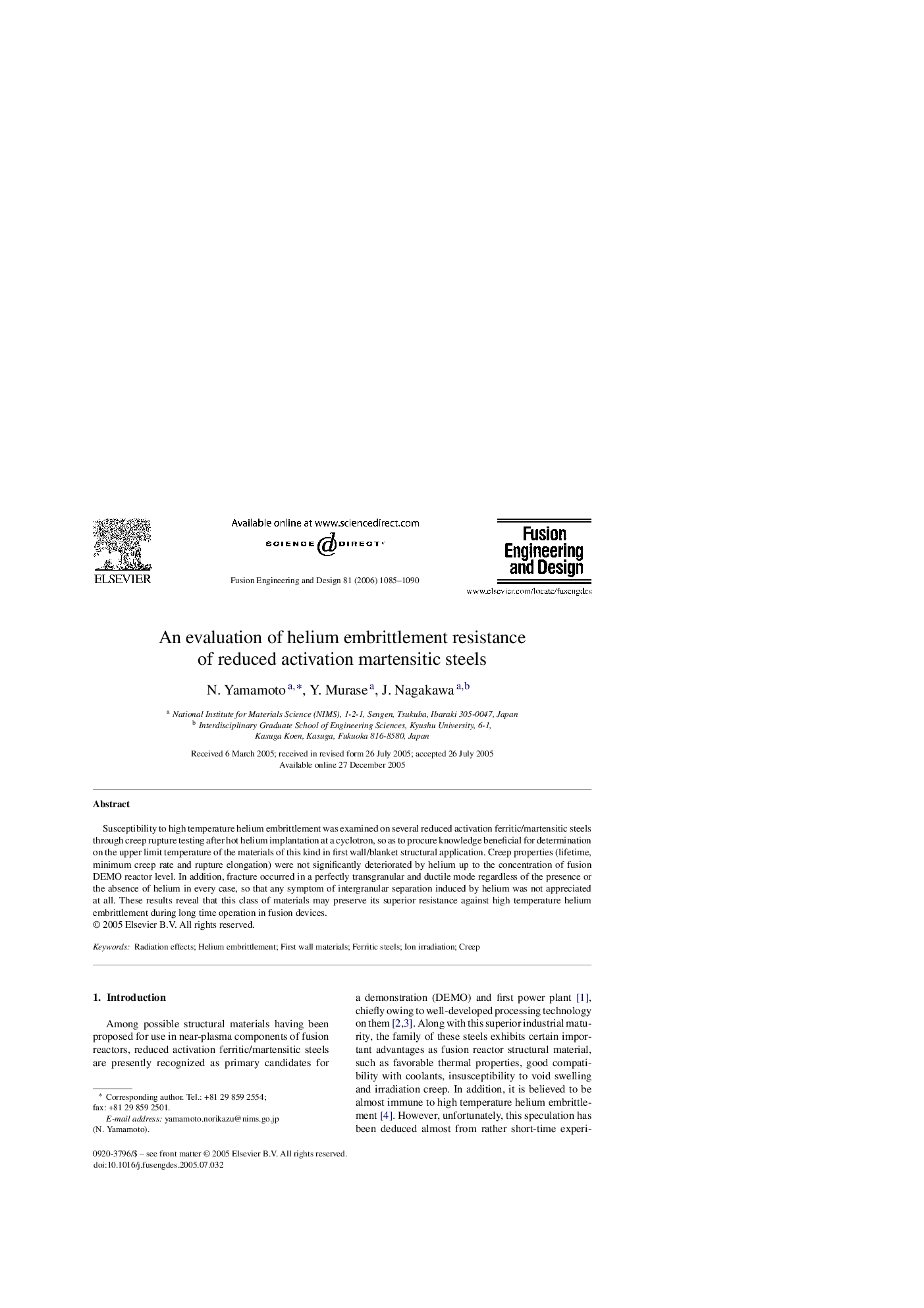| Article ID | Journal | Published Year | Pages | File Type |
|---|---|---|---|---|
| 273848 | Fusion Engineering and Design | 2006 | 6 Pages |
Susceptibility to high temperature helium embrittlement was examined on several reduced activation ferritic/martensitic steels through creep rupture testing after hot helium implantation at a cyclotron, so as to procure knowledge beneficial for determination on the upper limit temperature of the materials of this kind in first wall/blanket structural application. Creep properties (lifetime, minimum creep rate and rupture elongation) were not significantly deteriorated by helium up to the concentration of fusion DEMO reactor level. In addition, fracture occurred in a perfectly transgranular and ductile mode regardless of the presence or the absence of helium in every case, so that any symptom of intergranular separation induced by helium was not appreciated at all. These results reveal that this class of materials may preserve its superior resistance against high temperature helium embrittlement during long time operation in fusion devices.
